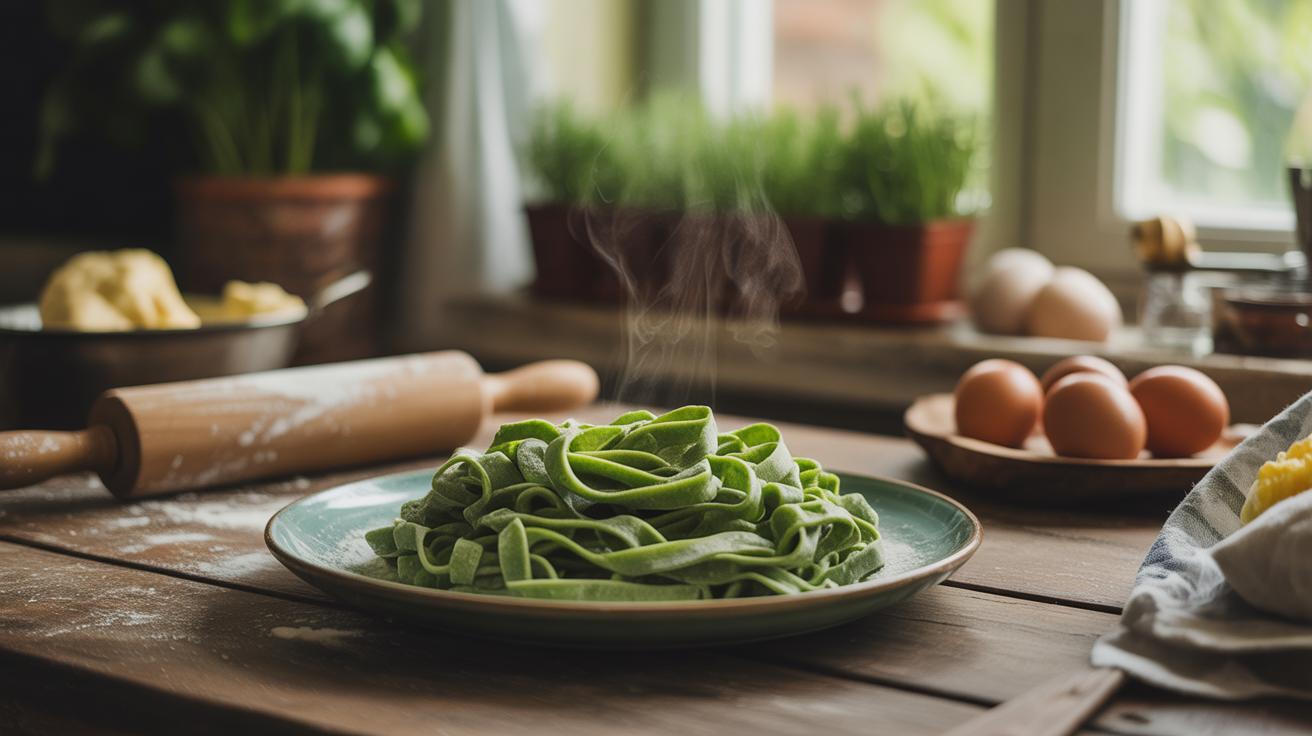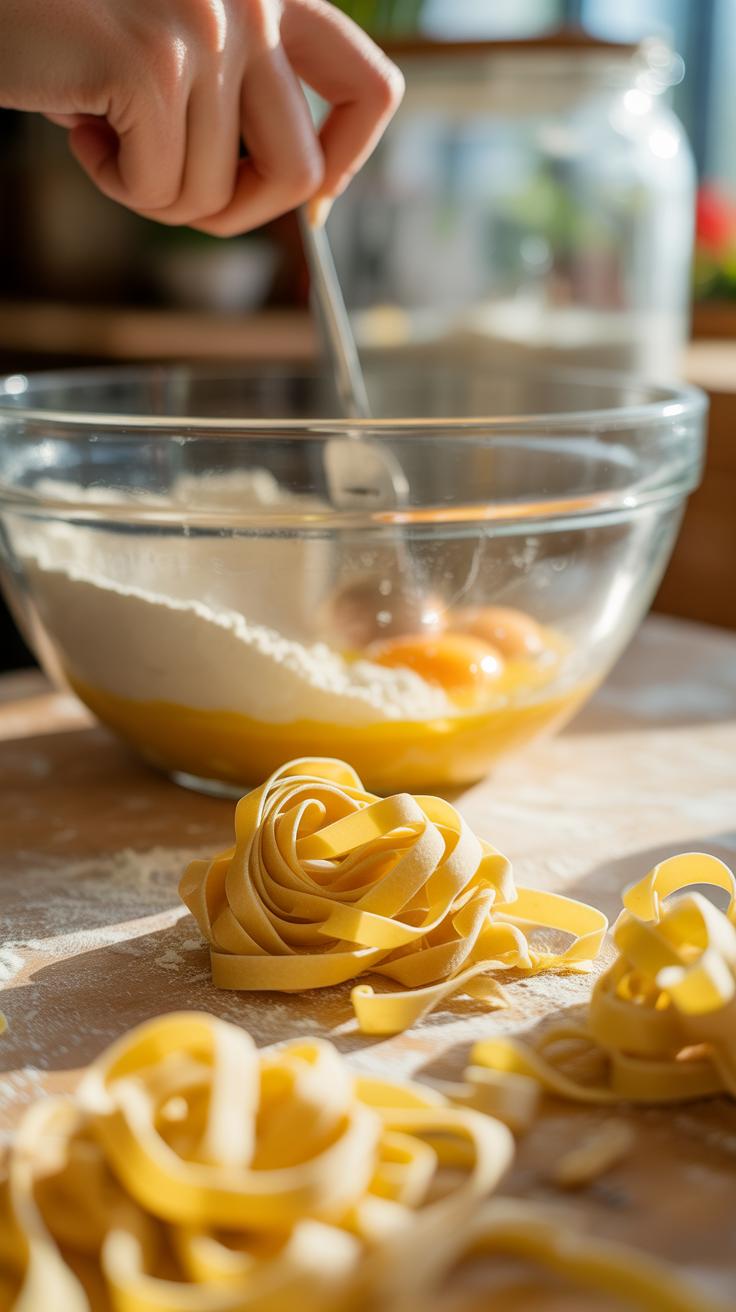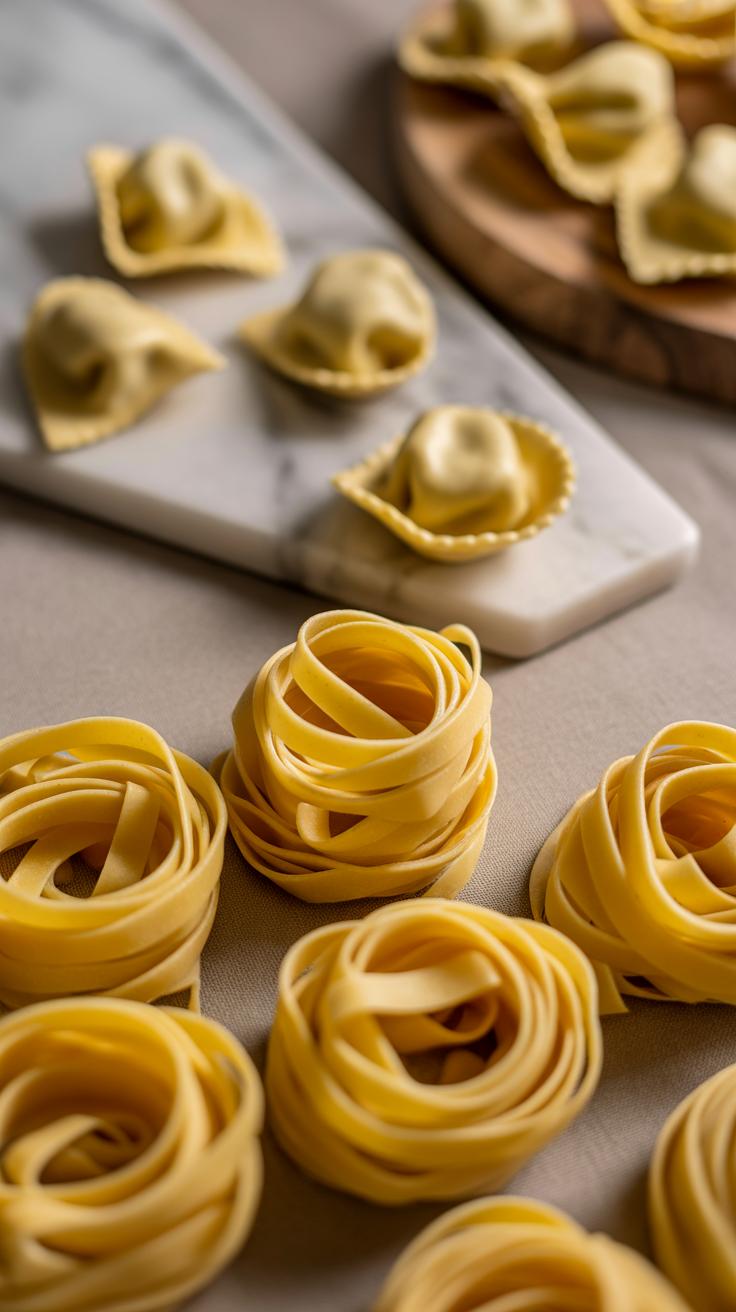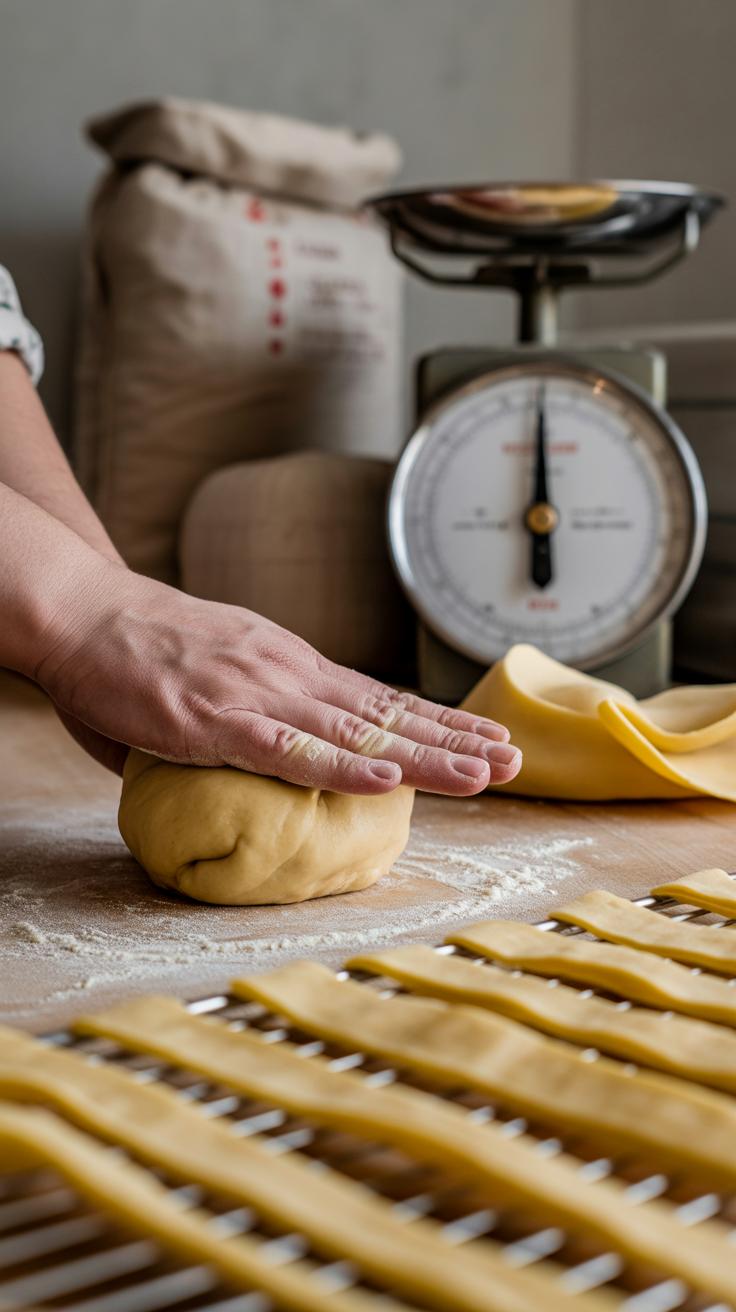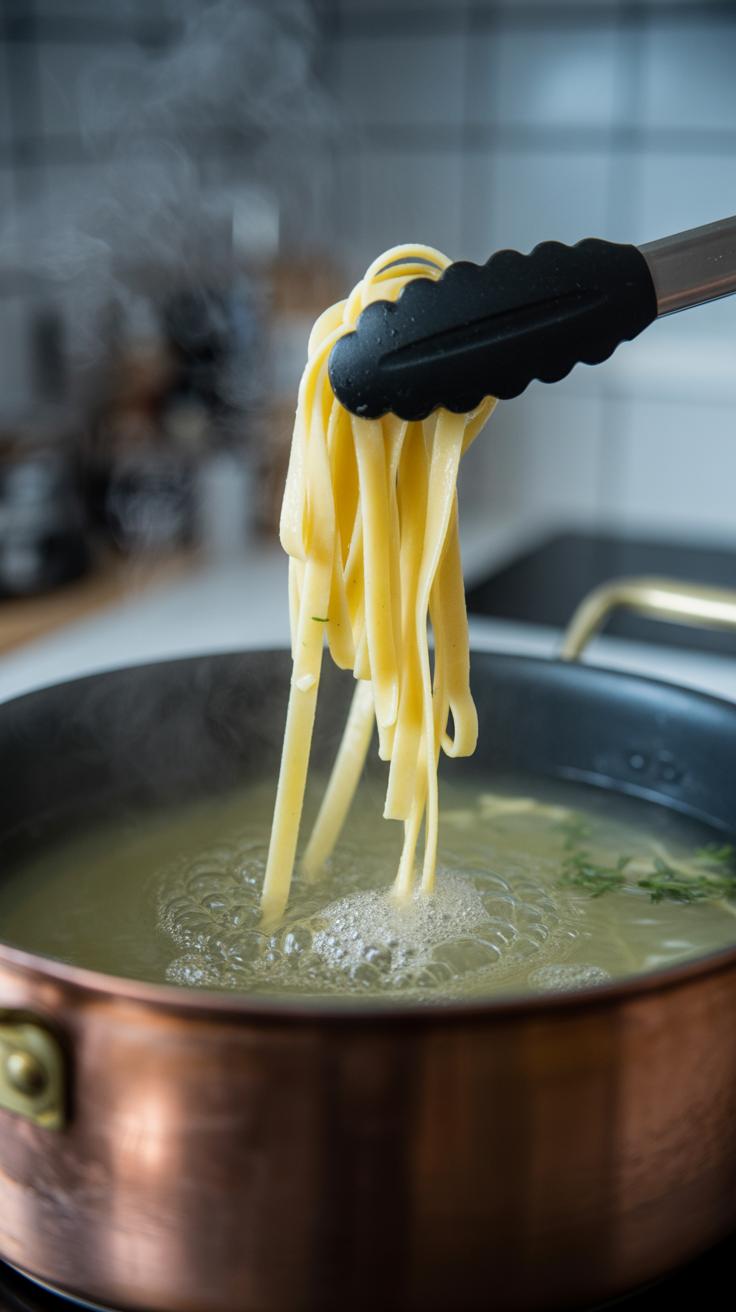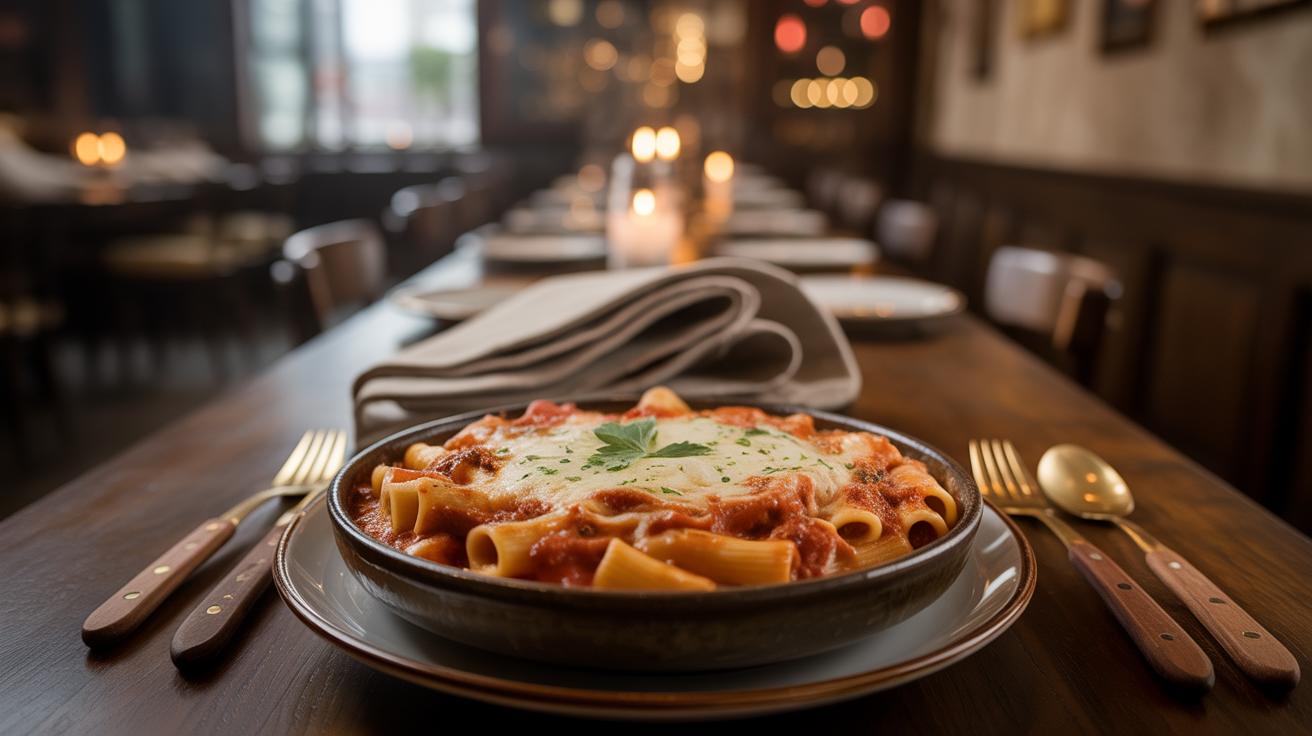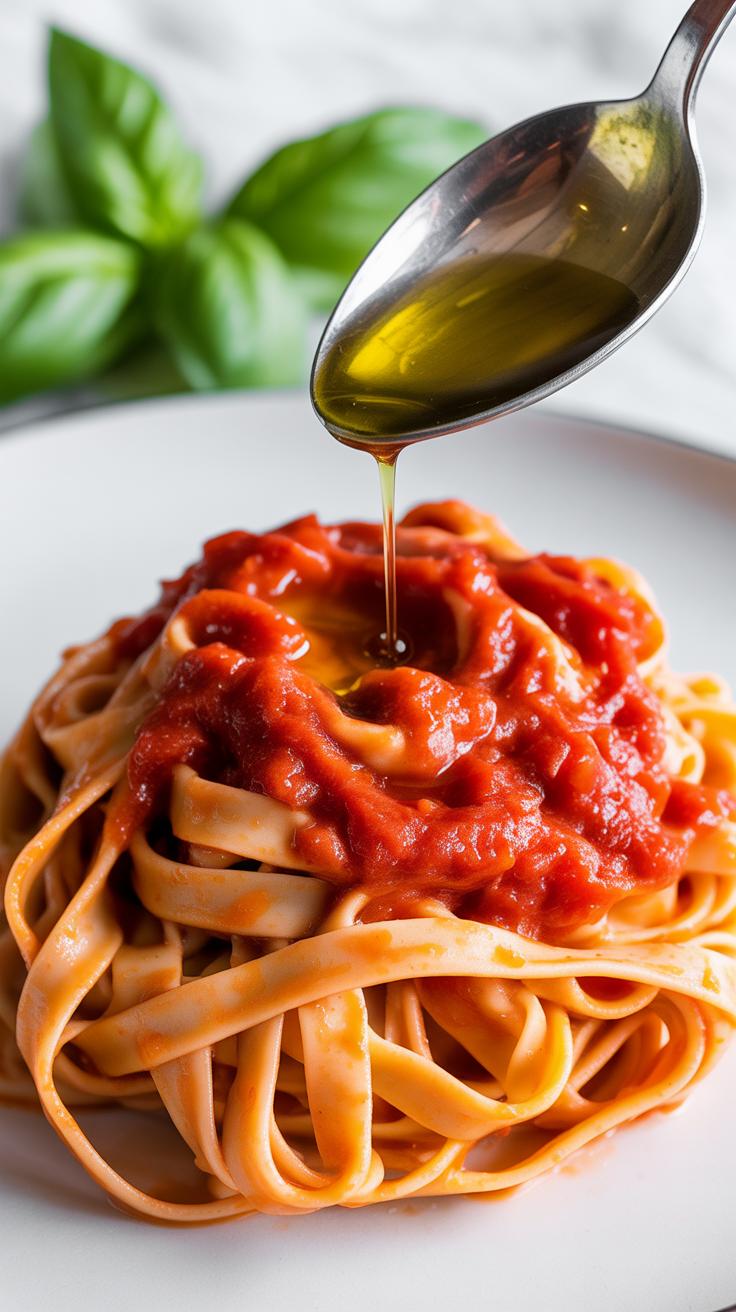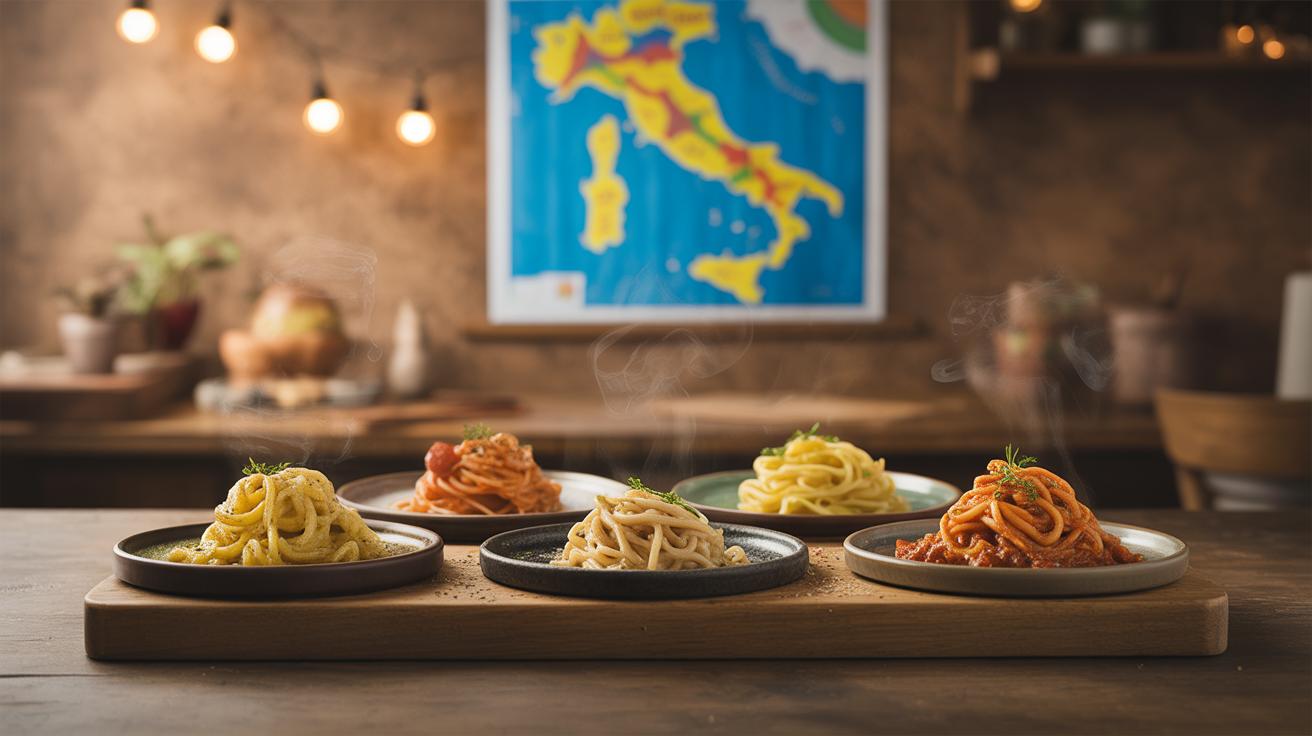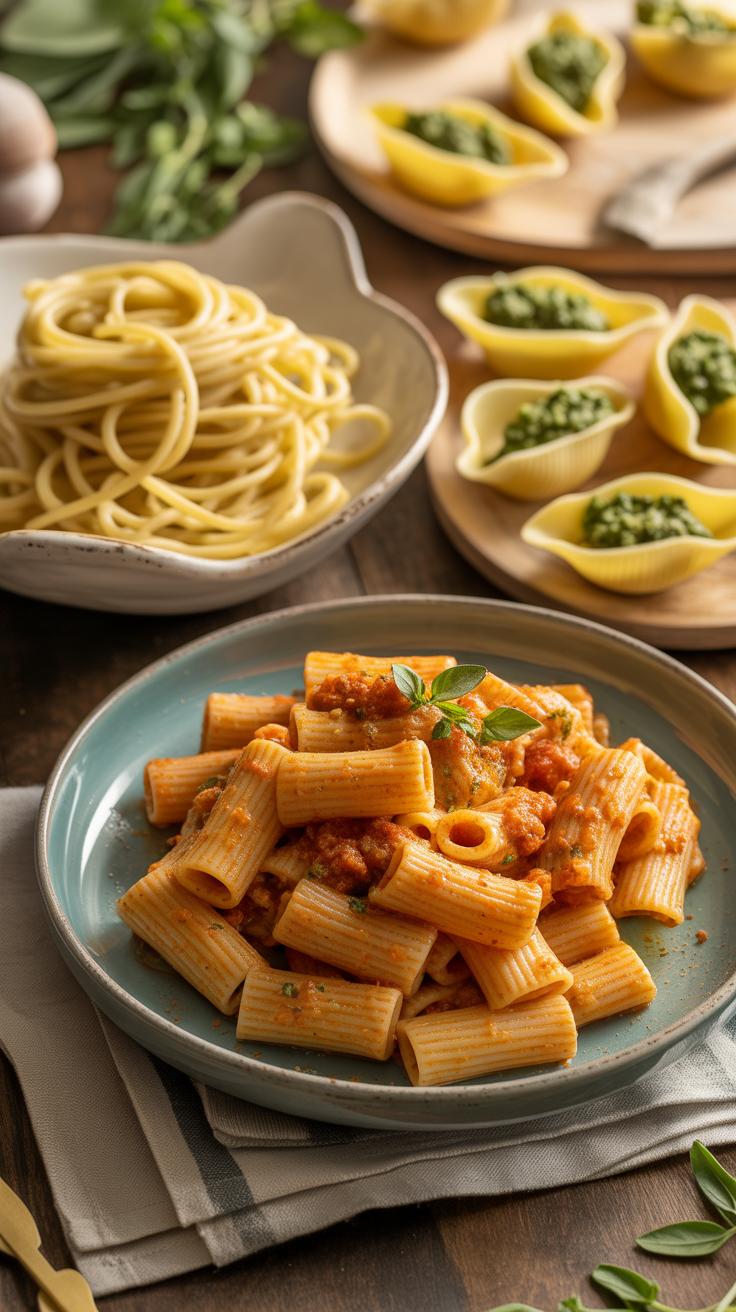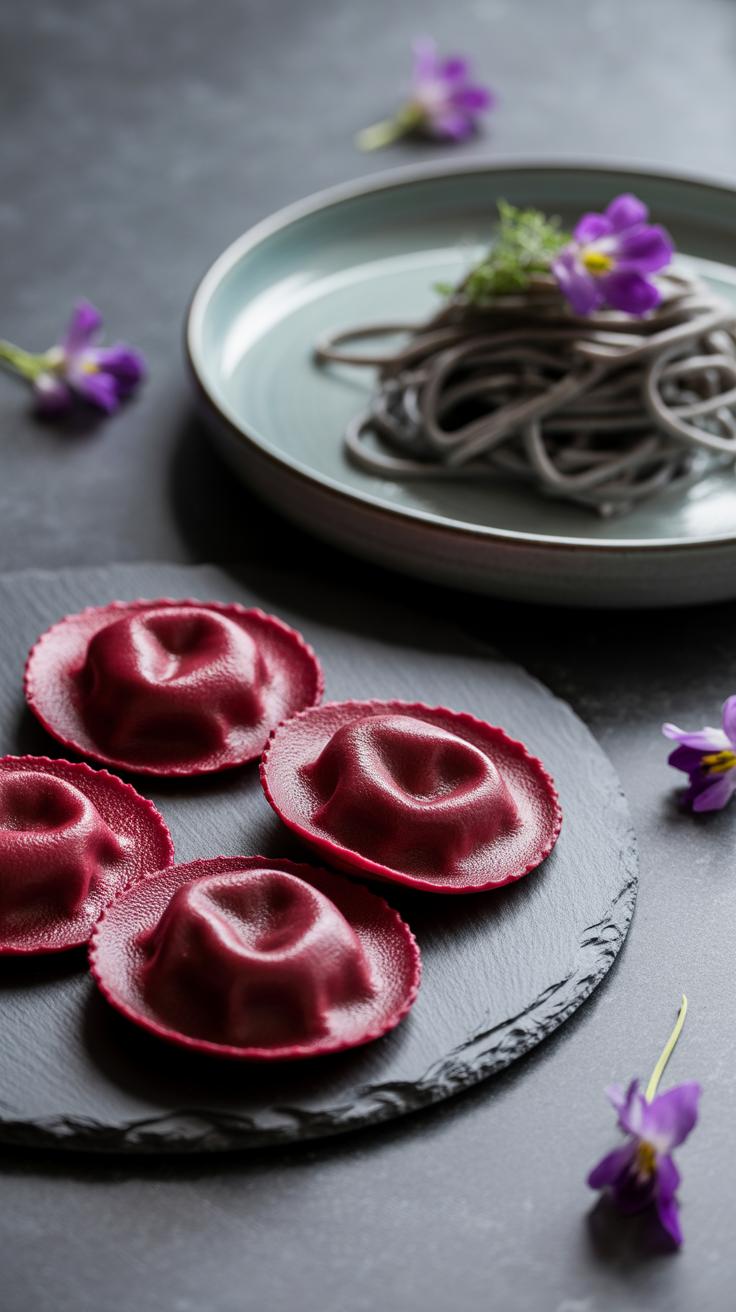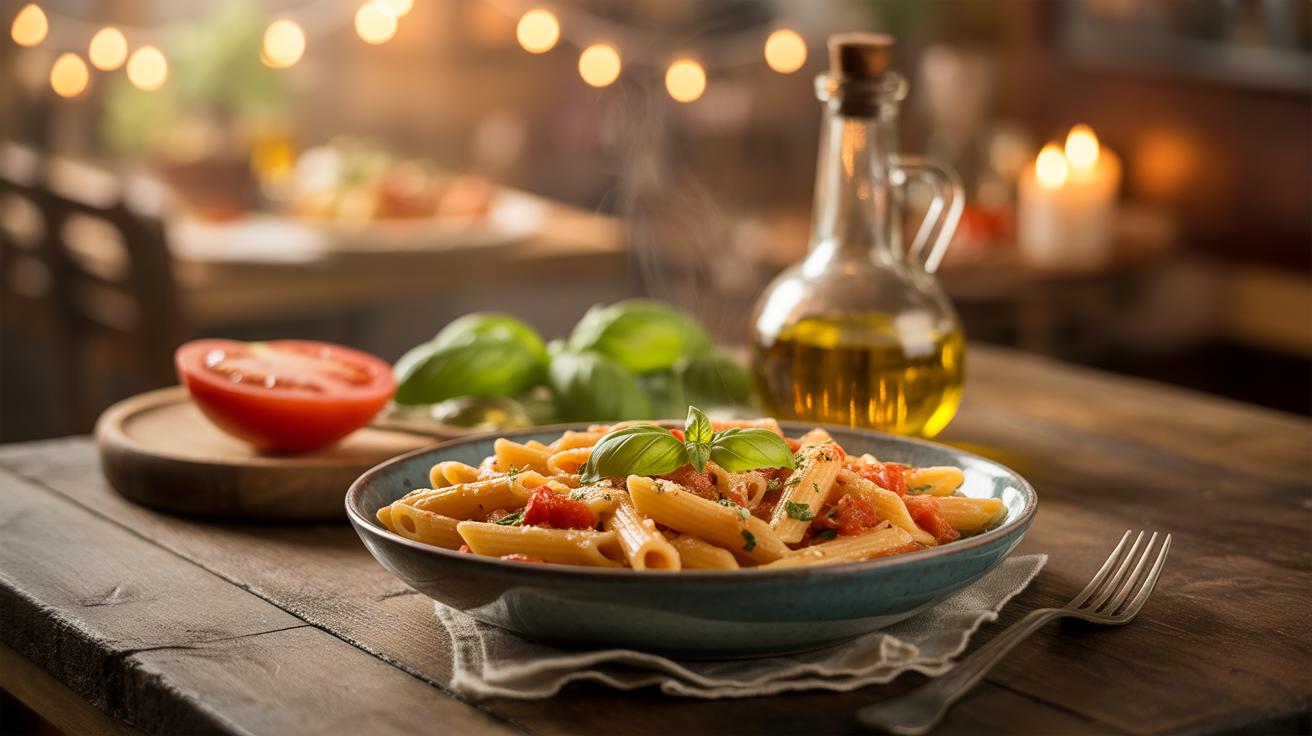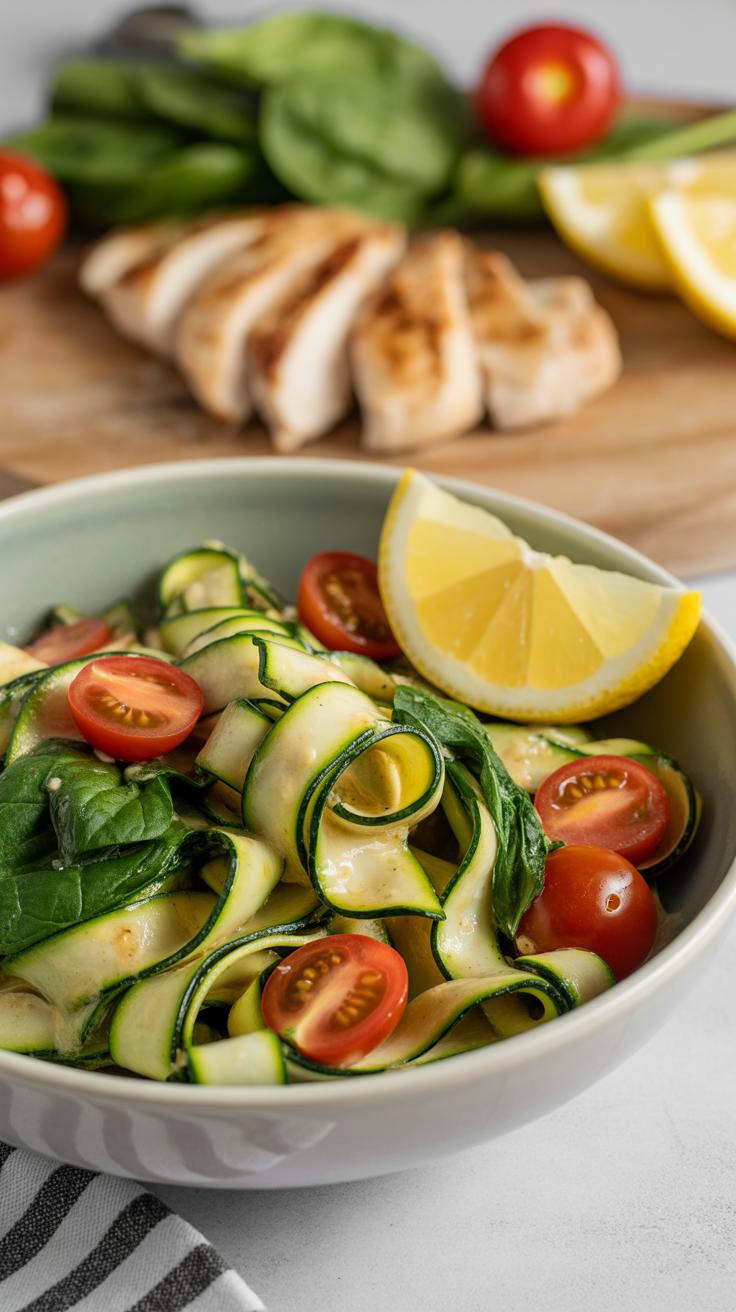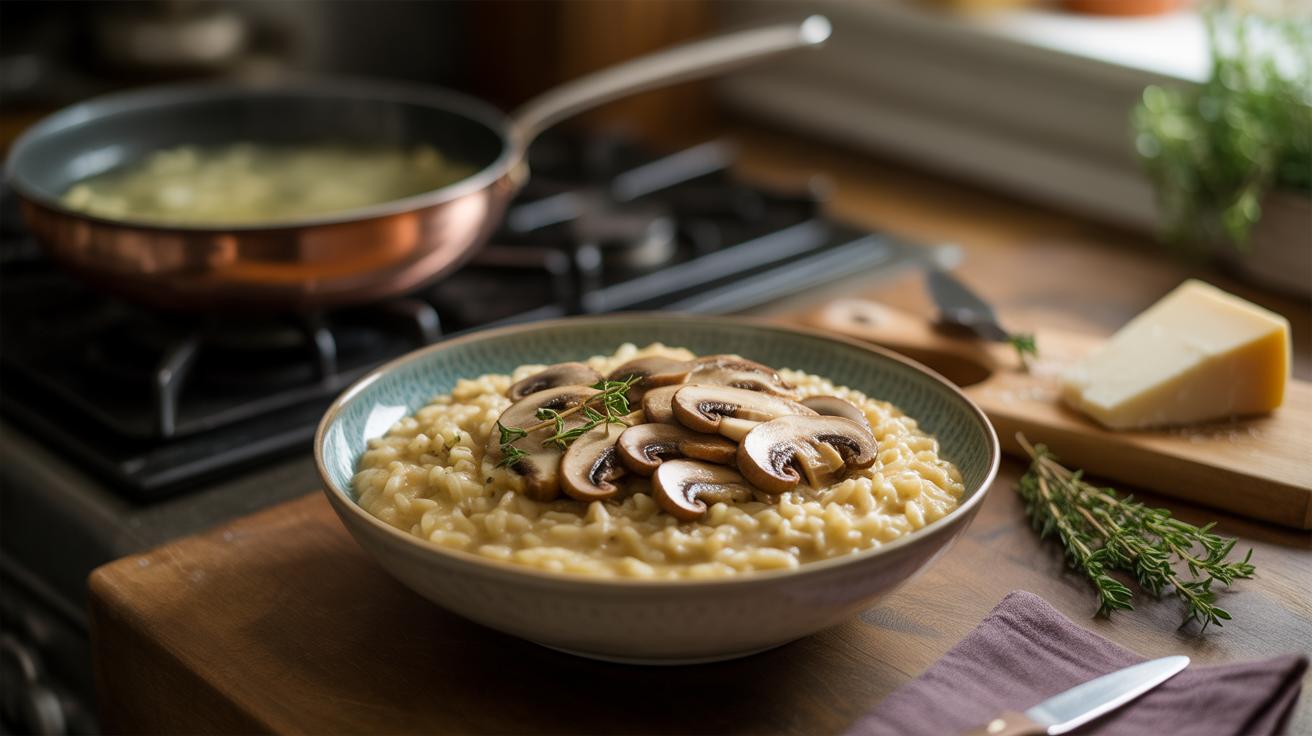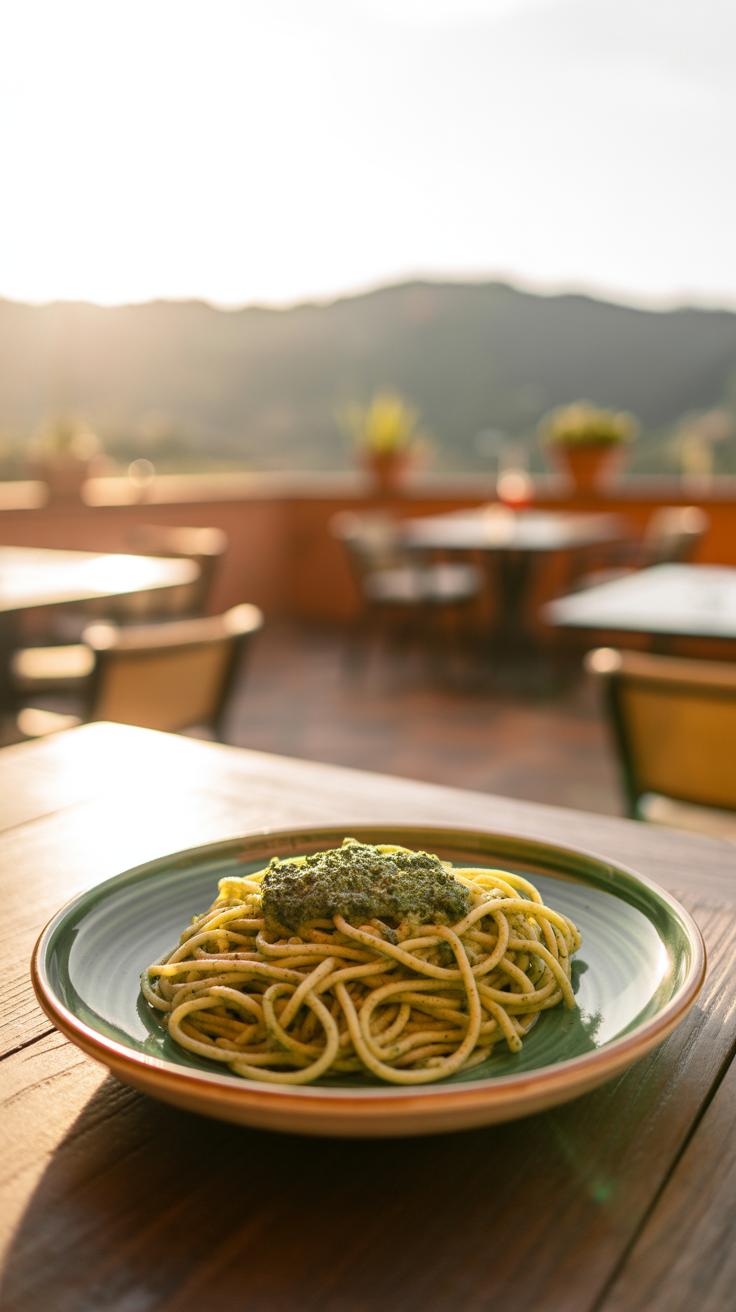Introduction
Fresh pasta dishes offer a wonderful way to bring taste and variety to your home cooking. Whether you are a beginner or an experienced cook, fresh pasta can add a special touch to your meals. This article will guide you through different types of fresh pasta, how to make them, and how to pair them with sauces for a satisfying dish.
You will also learn about cooking techniques and tips to perfect your pasta, explore popular dishes, and discover how pasta fits into a healthy diet. This exploration of fresh pasta dishes aims to inspire you to try new recipes and improve your everyday meals.
What Is Fresh Pasta and Why Choose It
Definition and Composition of Fresh Pasta
Fresh pasta basically means pasta made from a simple dough, usually wheat flour and eggs. Sometimes water gets mixed in, especially when eggs are scarce or for lighter doughs. The process is quite hands-on—you mix, knead, roll out, and shape the dough by hand or with a roller. This gives it a certain texture you just don’t find in dried pasta sitting on supermarket shelves. Traditional recipes often keep it minimal: flour, eggs, maybe a pinch of salt. No preservatives, no stabilizers.
Depending on the region or family tradition, the flour might be all-purpose, semolina, or even specialty flours like ‘00’ type. Eggs vary too. More yolks mean richer pasta. It’s all about balance. You might wonder why some fresh pasta dough feels soft while others are firmer—that’s part of the charm. It’s a subtle art that you can try at home without feeling overwhelmed.
Advantages of Fresh Pasta Over Dried Pasta
Fresh pasta cooks quickly—like, really quickly, often in just a few minutes. That alone changes your cooking rhythm and can make meal prep feel less like a chore. The texture is softer and more delicate, often with a slight chewiness that dried pasta lacks. Taste-wise, fresh pasta can have a richer, more eggy flavor, which pairs nicely with simple sauces.
But is it always better? Not necessarily. Dried pasta holds up well with heavy sauces and long cooking times, while fresh pasta shines with lighter, delicate toppings. I remember trying fresh tagliatelle with a quick olive oil and garlic sauce—it felt almost like eating a completely different dish than using dried noodles. Plus, fresh pasta has this way of absorbing sauces effortlessly, making every bite flavorful.
The tradeoff? Fresh pasta spoils faster, so you can’t just stash it away for months. But if you cook one night a week or enjoy weekend pasta projects, fresh pasta brings something a bit unexpected and special to your everyday meals. It’s a small step that can really change how you think about cooking pasta at home.
Common Types of Fresh Pasta and Their Uses
Fresh pasta comes in many shapes and sizes, each suited to different sauces and dishes. Let’s start with long and ribbon pastas. Tagliatelle, fettuccine, and pappardelle are familiar types that feel simple but offer lots of variety. Tagliatelle and fettuccine are quite close—slightly narrow ribbons that hold creamy sauces well, like a good Alfredo or a rich Bolognese. Pappardelle is broader, sturdier, and better for hearty sauces with chunks, such as wild boar ragù. You might notice that the sauce sticks differently depending on the width, making the experience subtly unique every time you try another type.
Moving on to stuffed and small-shaped pastas, ravioli, tortellini, and gnocchi come to mind. Ravioli are pockets of dough filled with cheese, meats, or vegetables. A classic filling is ricotta with spinach, great with a light butter or sage sauce. Tortellini tend to be smaller and often packed with a mix of pork and cheese, typically served in broth or with a simple cream sauce. Then there’s gnocchi, which aren’t exactly pasta but closely related; these potato dumplings pair best with chunky tomato sauce or melted butter with sage. It’s interesting how these shapes change the texture and texture really guides what sauce or accompaniment works best.
Choosing the right shape might depend on what you’re craving or what you have on hand, but trying each with its traditional pairings usually results in a satisfying meal. Ever wonder why some sauces just don’t work with certain pastas? That’s largely about how pasta holds or resists sauce—the surface area, thickness, and shape all influence the taste and mouthfeel, sometimes in surprising ways.
Making Fresh Pasta at Home
Basic Fresh Pasta Dough Recipe
Making fresh pasta dough is surprisingly simple, even if you’ve never tried it before. The classic recipe requires just a few ingredients:
- 2 cups of all-purpose flour
- 3 large eggs
- A pinch of salt
Start by piling the flour on a clean surface into a mound, then create a well in the center. Crack the eggs into the well and add a pinch of salt. Use a fork to gently beat the eggs, slowly bringing in flour from the edges. Once it becomes tough to mix, use your hands to knead until the dough feels smooth and elastic, which can take around 8 to 10 minutes. If it’s sticky, add a little flour; if too dry, dampen your fingers with water. Wrap the dough in plastic wrap and let it rest for at least 30 minutes — this rest is key for easier rolling later, trust me.
Tools and Techniques for Shaping Fresh Pasta
Once your dough rests, shaping it becomes the next step. You can roll it out by hand with a rolling pin, though it can be a bit of work to get it thin enough. A pasta machine is handy here; it helps flatten the dough evenly and allows control over thickness with numbered settings. Pass the dough through progressively thinner rollers to avoid tearing.
Cutting shapes depends on what you want: broad strips for tagliatelle, squares for ravioli, or smaller shapes for orecchiette. Hand-cutting works fine—keep a sharp knife nearby. For stuffed pasta, folding techniques matter; for others, like pappardelle, a simple rolling and slicing motion does the trick.
Have you tried making fresh pasta just with your hands because you didn’t have a machine? It’s messier, yes, but there’s something charming about that imperfect homemade look. Each tool changes the feel and texture, so maybe experiment a bit to find what suits your kitchen and patience level.
Cooking Fresh Pasta Perfectly
Fresh pasta cooks a lot faster than dried pasta, and that often surprises people. While dried pasta usually takes eight to twelve minutes, fresh pasta can be ready in just one to three minutes, sometimes even less. The timing really depends on the shape and thickness—thin strands like tagliolini might only need 30 seconds to a minute, whereas thicker shapes such as pappardelle will require a bit more time.
One tip I’ve learned is to taste frequently. It’s tempting to walk away, but fresh pasta can go from perfect to mushy quickly. Keep a close eye, or rather, a close fork ready. Timing is tricky because it depends on how thin you rolled out the dough and even the moisture content, which makes every batch a little different. I’ve had fresh pasta turn out overcooked more than once, and it’s not great.
Salt plays a key role beyond just flavor. Make sure your boiling water is salted generously, as it seasons the pasta from the inside out. Salt also helps keep the pasta from sticking together before you drain it. Speaking of sticking—stir your fresh pasta gently and immediately after adding it to the water to prevent clumps. But don’t stir constantly. It’s a fine line.
One thing people often miss: don’t rinse fresh pasta after draining. That rinses away some of the starch that helps sauce cling. Instead, toss it directly into your sauce or a bit of olive oil if you’re waiting. That way, the textures and flavors you worked for can really shine through.
Classic Sauces That Elevate Fresh Pasta
Tomato Based Sauces
Tomato sauce is the go-to for many fresh pasta dishes, and for good reason. It’s simple, bright, and lets the pasta shine without overwhelming it. Making a basic sauce is straightforward: sauté garlic and onion in olive oil until soft, then add crushed tomatoes. Let it simmer, stirring now and then, until flavors meld and the sauce thickens slightly. A pinch of salt, a drop of sugar if needed, and maybe a bit of fresh basil or oregano, and you’re good to go.
What works well here is how the fresh pasta absorbs the sauce without losing its texture. The acidity in the tomatoes cuts through the doughy richness, balancing the dish. I’ve found it pairs smoothly with strands like tagliatelle or pappardelle, but honestly, it can be surprisingly good even with stuffed pasta, where a lighter sauce might actually highlight the filling.
Creamy and Pesto Sauces
Then there are creamy sauces, which feel indulgent but can be quick to prepare. A simple cream sauce might just be simmering cream with a bit of grated Parmesan and cracked pepper. The key is low heat so it doesn’t split, stirring gently until it thickens slightly. This suits shapes like fettuccine or rigatoni, where the sauce clings to the pasta’s broad surface or catches in ridges.
Pesto comes from a different angle. It’s raw, fresh, and herbaceous. Traditional pesto blends basil, pine nuts, Parmesan, garlic, and olive oil into a vibrant green sauce. You can adjust the texture — chunkier or smoother — depending on your preference. It’s especially nice on delicate shapes like trofie or thin strands, where the sauce gets caught in the twists.
Both creamy and pesto sauces offer contrast to tomato-based ones, bringing variety to what could otherwise be a repetitive rotation. Have you tried mixing a spoonful of pesto into cream sauce? It’s an experiment worth attempting if you like new flavors.
Pairing Pasta Shapes with the Right Sauce
Choosing the right sauce for your pasta shape can completely change the dish. It’s not just about taste but also texture and how each bite feels in your mouth. Long, ribbon-like pasta, such as fettuccine or tagliatelle, tends to work best with lighter sauces that don’t weigh the noodles down.
Matching Long Pasta with Light Sauces
Think of sauces based on olive oil or simple cream—something that lightly coats the strands without smothering them. A garlic-infused olive oil with fresh herbs or a gentle cream sauce with a touch of lemon zest can elevate these pastas. You’ll want to avoid chunky sauces here; they might get lost or disrupt the silky flow of the ribbons. I’ve noticed that even a subtle drizzle of browned butter with sage can bring out some surprising depth when paired with these shapes. Sometimes less really feels like more.
Robust Sauces for Stuffed and Short Pasta
When it comes to ravioli, tortellini, or small shapes like orecchiette, the equation flips. These pastas carry filling or have a thicker structure, so they need a sauce that packs some heft. Think rich ragùs, thick tomato and meat sauces, or creamy mushroom blends. These sauces cling to little pockets and crevices, giving you balanced flavors with every bite. I’m not sure why, but it feels like hearty sauces kind of ‘anchor’ the stuffed pastas, making the meal more satisfying. It’s a pairing that just clicks, even if you occasionally try to use a thin sauce—you’ll probably end up adding Parmesan to create that fuller mouthfeel anyway.
Creative Fresh Pasta Dishes to Try at Home
Quick and Easy Pasta Recipes
Fresh pasta cooks fast, which makes it perfect for those moments when you want something tasty but don’t want to spend hours in the kitchen. Sometimes, simple is best. Think about tossing fresh fettucine with olive oil, garlic, and a handful of cherry tomatoes. It’s barely three ingredients, yet the flavors feel bright and satisfying. Or, if you have some fresh basil and Parmesan, stir them into warm pasta with a splash of pasta water for a quick sauce that somehow feels special despite its simplicity.
Here are a few ideas that rarely fail:
- Fresh spaghetti with browned butter and sage leaves
- Tagliatelle with a quick tomato and basil sauce
- Ravioli stuffed with ricotta and spinach, served with just melted butter and a sprinkle of nutmeg
These dishes remind me that sometimes less really is more. You don’t need a long ingredient list to create something delicious.
Special Occasion Fresh Pasta Dishes
When there’s a family gathering or a celebration, you might want to stretch your pasta skills a bit. Making fresh pasta dishes that stand out can be part of the fun. Think about homemade pappardelle paired with a slow-cooked ragù, where the richness of the meat contrasts beautifully with the tender noodles you made yourself. Or maybe try stuffed pasta like tortellini filled with meat or mushrooms—less common but sure to impress.
You can experiment with layering flavors and textures:
- Spinach and ricotta lasagna with fresh pasta sheets, baked until bubbly
- Seafood fettuccine in a light cream sauce with a hint of lemon zest
- Butternut squash ravioli with sage brown butter and toasted walnuts
While these recipes take more time, they offer a kind of reward you don’t get from boxed pasta. It’s a way to show care through food and maybe even surprise your guests. But honestly, those special dishes aren’t just for formal occasions—they can make a regular weekend feel more… alive, if that makes sense.
Incorporating Fresh Pasta into Healthy Meals
Fresh pasta can easily fit into a balanced diet, if you’re mindful of portions and the company it keeps on your plate. Unlike some heavy meals that feel like a load, a serving of fresh pasta—about one cup cooked—is often enough to satisfy without overwhelming. It’s tempting to pile on, but keeping portions in check lets you enjoy the dish without feeling sluggish afterwards.
Pairing fresh pasta with plenty of vegetables is key. Imagine tossing it with roasted zucchini, cherry tomatoes, or sautéed spinach—not only does this boost fiber and vitamins, but it adds texture and freshness that balances the softness of the pasta.
Don’t forget some lean protein to round things out. Think grilled chicken, shrimp, or even beans for a plant-based touch. These toppings help keep blood sugar stable and keep you full longer, which makes a big difference during busy weekdays.
Nutritional Benefits of Fresh Pasta
Fresh pasta is often praised for its tender texture and quick cooking time, but what about its nutrition? Compared to dried pasta, fresh pasta usually contains slightly fewer calories and carbs per serving because it’s less dense, though the difference isn’t huge. It typically contains eggs, which add a bit of protein and fat, giving it a richer profile.
When compared to other carbs—say, white bread or rice—fresh pasta sits somewhere in the middle. It offers complex carbohydrates that break down more slowly than simple sugars. Still, it’s best to avoid overdoing it, especially if you’re watching your carb intake.
Adding Vegetables and Proteins for Balanced Plates
Combining fresh pasta with vegetables and proteins transforms it from a simple side into a full meal that hits all the marks. You might try:
- Fresh peas and asparagus with lemon and Parmesan for a spring-inspired dish.
- Roasted bell peppers and grilled chicken with a drizzle of pesto.
- Mushrooms, kale, and white beans sautéed with garlic for a vegan-friendly option.
Experiment with colors and flavors—fresh pasta is like a blank canvas. The vegetables bring nutrients and fiber, while the protein supports muscle repair and fullness. Plus, mixing in herbs can boost the flavor without extra calories. Don’t shy away from adding a splash of olive oil or a sprinkle of nuts for healthy fats. Even if you think you’ve nailed the recipe, there’s always room to tweak for better balance.
Tips for Storing and Reheating Fresh Pasta
Proper Storage Methods for Fresh Pasta
Fresh pasta doesn’t keep forever, so you have to be careful about storing it. If you’ve made more than you can eat in one go, refrigeration is usually fine for short-term storage. Place the pasta in an airtight container or wrap it tightly with plastic wrap. Leftover fresh pasta can sit in the fridge for up to two days, though I tend to use it sooner, just to be safe.
For longer storage, freezing is your friend. Lay the pasta out on a baking sheet dusted lightly with flour, so the strands or shapes don’t stick together. Freeze until firm, then transfer it to a sealable bag or container. Frozen fresh pasta lasts for a couple of months if done right. When you want to cook it, no need to thaw—just drop it straight into boiling water, a bit like with dried pasta.
Reheating and Serving Leftover Pasta
Reheating pasta can be tricky—nobody wants rubbery or mushy noodles. Stirring leftover pasta back into a sauce on low heat often works best, adding a little water or stock to loosen things up. Microwaving can dry pasta out quickly, so if you use that method, cover the dish and add moisture.
Sometimes, pasta loses its bite after refrigeration, and I’ll admit, reheating rarely brings back the exact texture of freshly cooked pasta. But a splash of olive oil or sauce can make a difference. Also, I find reheating just the sauce separately and tossing freshly cooked pasta in can be better than trying to save it all.
Would you rather eat leftover pasta cold, like in a salad? That’s an option too, with the right dressing and fresh veggies. It’s all about how you want to enjoy it the next day.
Exploring Regional Specialty Pasta Dishes
Northern Italian Pasta Traditions
Northern Italy is a fascinating place when it comes to pasta, often featuring shapes and sauces that stray from the tomato-based fare many expect. You’ll find a strong use of butter, cream, and cheese—ingredients that reflect its cooler climate and rich dairy production. Dishes like *Tortellini* from Emilia-Romagna come to mind: small, ring-shaped pasta filled with a mixture of meats and cheeses. They’re usually served in broth or with a simple butter and sage sauce, rather than with heavy tomato sauces.
Then there’s Pizzoccheri from Lombardia, a buckwheat pasta, quite different from your standard semolina versions. It’s paired with potatoes, greens, and plenty of melted cheese, making it hearty and comforting—a reminder that northern pasta tends to feel rustic but refined. The textures can be interesting here; that combination of soft pasta alongside chunky vegetables creates a satisfying contrast, one that you might not expect from the usual pasta dishes at home.
Careful with the butter and cream, though. They add richness but can sometimes overshadow the pasta itself if you’re not cautious. Still, I think trying these northern dishes broadens your pasta experience, inviting you to think beyond red sauce.
Southern Italian Pasta Favorites
Move south, and the style dramatically shifts. Southern Italian pasta is generally more vibrant, often pairing with bold, fresh flavors. Look at Orecchiette from Puglia—small, ear-shaped pasta that traps hearty vegetable-based sauces, like those with broccoli rabe or fresh tomatoes. The texture here is firm but tender, perfect for holding onto chunky mixtures rather than thin liquids.
In Naples, you have classic Spaghetti alle Vongole, combining simple ingredients—spaghetti, clams, garlic, chili, and olive oil—into something quite striking. This one feels lighter but packs a punch in flavor. Olive oil and garlic dominate, making the dish bright but not overwhelming. It’s almost like a quick dance of flavors rather than a long slow simmer.
And don’t forget Pasta alla Norma from Sicily, featuring fried eggplant and ricotta salata cheese with tomato sauce. The ingredients feel rustic, yet every bite has layers of texture and taste. Cooking style here often means fresh, local produce, with dishes leaning into sunlight and earthiness rather than heavy creams.
So, which style calls to you in your daily cooking? Northern creaminess or southern brightness? Maybe a mix could be the best way to keep your pasta nights interesting. Each region offers dishes that teach you new ways to think about pasta—both in what you cook with it and how you enjoy it.
Conclusions
Fresh pasta dishes are an accessible way to enrich your cooking routine. By understanding the different types of pasta, choosing the right sauces, and applying simple cooking techniques, you can create meals that bring joy to your table. The variety of pasta shapes and recipes allows you to customize dishes to your taste and dietary preferences.
Start experimenting with fresh pasta in your kitchen. Enjoy the process, and don’t hesitate to try new sauces or fillings. As you explore these dishes, you will gain confidence and skill, making pasta a regular and delightful part of your home cooking.

